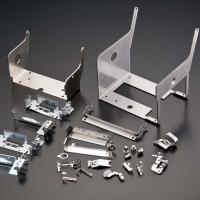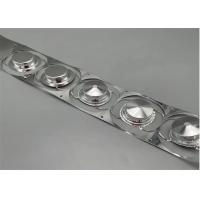As an indispensable part of modern industrial manufacturing,
stamping sheet metal is bringing efficient and economical solutions
to various industries with its excellent cost-effectiveness.
In terms of processing technology, stamping sheet metal adopts the
method of pressure processing. By using molds installed on a press
machine, force is applied to metal sheets at room temperature,
causing them to undergo separation or plastic deformation, thereby
accurately obtaining the required parts. This process belongs to
the main form of non-cutting processing, often referred to as cold
bending. The processing materials are mainly sheets, also known as
sheet metal processing. Throughout the process, the thickness of
the sheet changes minimally, and the internal structure remains
stable, not only ensuring product quality but also reducing
material waste.
The high cost-effectiveness is first reflected in production
efficiency. Stamping sheet metal is processed with the aid of molds
and stamping equipment. An ordinary press machine can reach dozens
of strokes per minute, while high-speed press machines can even
achieve hundreds or thousands of strokes per minute, with one
stamping part produced in each stroke. Such an efficient production
mode significantly shortens the production cycle, provides strong
support for enterprises to deliver products quickly, and reduces
time costs.
The cost advantages are also evident in material utilization and
energy consumption. During the stamping process, generally no chips
are generated, resulting in low material consumption, and no
additional heating equipment is required, making it an
energy-efficient processing method. Meanwhile, when designing
stamping parts, if reasonable planning is carried out, standard
mold bases are selected, and the utilization rate of metal
materials is increased as much as possible while reducing the
variety and specifications of materials, the cost can be further
reduced. For example, the diameter of a circular mold base is 30 -
70mm larger than that of the concave template, the length of a
rectangular mold base is 40 - 70mm larger than that of the concave
template, and the width can be slightly larger or equal. The
thickness of the mold base is 1.0 - 1.5 times that of the concave
template. Such a design can ensure both strength and rigidity while
avoiding material waste.
In terms of product quality, stamping sheet metal also performs
outstandingly. Since the mold precisely ensures the dimensional and
shape accuracy of stamping parts and generally does not damage
their surface quality, and the mold usually has a long service
life, the quality of stamping parts is stable, and the
interchangeability is excellent. Each part can meet the standard of
being "exactly the same." Whether it is processing small instrument
parts or complex parts such as large automotive crossbeams,
stamping sheet metal can handle them with ease, with an extremely
wide range of adaptability. Moreover, stamping sheet metal can
produce parts with thin walls, light weight, high strength, and
high rigidity, meeting the strict requirements of different
industries for product performance.
In terms of application fields, stamping sheet metal serves a wide
range of industries, including aerospace, machinery, electronic
information, transportation, weapons, household appliances, light
industry, etc. In the aerospace field, it is used to manufacture
key components such as aircraft fuselages and wings; in the
automotive industry, automotive bodies, doors, hoods, etc. are all
inseparable from stamping sheet metal parts; in the electronic
information industry, the casings and internal structural parts of
mobile phones and computers are mostly made of stamping sheet
metal. Its versatility and practicality enable enterprises to solve
the problem of component manufacturing in one stop without the need
to seek multiple processing methods for different products, further
reducing comprehensive costs.
With its high production efficiency, excellent material
utilization, stable product quality, and wide range of
applications, stamping sheet metal fully demonstrates its
ultra-high cost-effectiveness. It is an ideal choice for various
industries in the manufacturing of components, helping enterprises
to achieve effective cost control and maximize production
efficiency while ensuring product quality.









